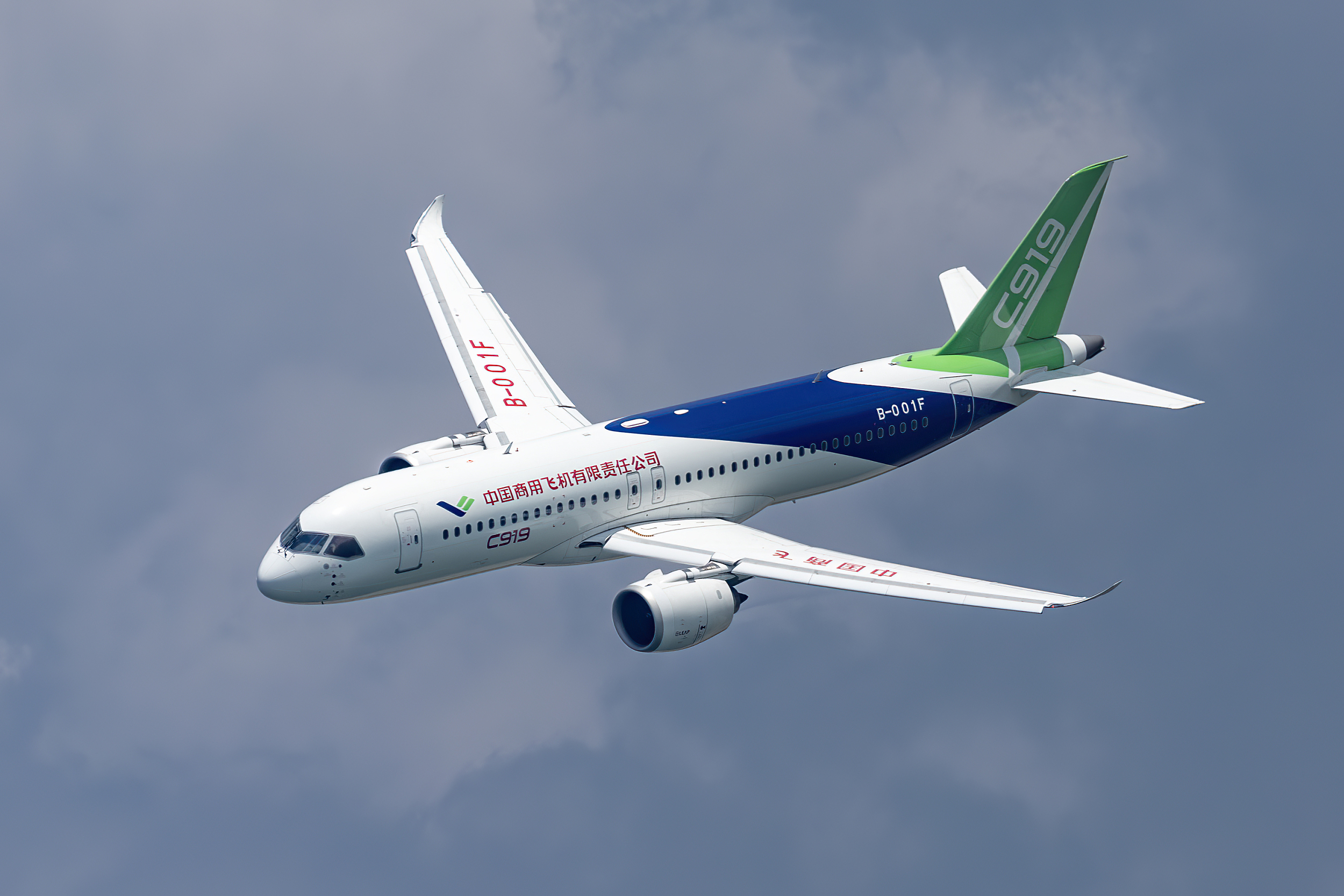
Liveried in white, green and navy blue, China's C919?made its international debut?at?the Singapore Airshow, held from February 20 to 25.?(PHOTO:?VCG)
Edited by GONG Qian
China has come out in force at the Singapore Airshow this year, bringing its largest-ever contingent, and showing off the new C919 — the country's first domestically developed large, narrow-body passenger aircraft, Japan Times reported.
For the first time, the Singapore Airshow, held from February 20 to 25, has exhibitors from China. C919 and the other showcased Chinese aircraft attracted wide attention.
The C919 would be the most scrutinized aircraft at the airshow, Shukor Yusof, founder of Endau Analytics, a firm that tracks the aviation industry, told CNN. “There is a lot of interest to see the actual aircraft, how it performs and how it is in flight,”?he said.
Manufactured by the Commercial Aircraft Corporation of China (Comac), the C919 made its international debut at the Asia’s largest airshow. According to The Hindu Daily, on the first day of the event, liveried in white, green and navy blue, the C919 wowed trade exhibitors, aviation executives and officials with sleek aerial manoeuvres.
The international debut of the C919 jet and the cost of going green by 2050 dominated the opening day of the airshow, Bloomberg reported.
Many overseas media called it a prominent symbol of “Made in China”?strategy. The C919 is a legitimate effort by China to build its own technological and industrial capabilities, Airbus commercial aircraft chief executive Christian Scherer was quoted as saying by the Straits Times.
“The Singapore Airshow is a fantastic opportunity for Comac particularly given the current situation with Boeing,” Brendan Sobie of Sobie Aviation told CNBC.?Boeing now has reduced production due to quality control issues and Airbus’?backlog is very long, which presents COMAC with?“a strong opportunity to gain market share,”?particularly in its domestic market, Mike Yeomans of aviation consultancy IBA told Reuters.
Previously, Comac had revealed that it had received orders for about 1,000 C919s. It is an impressive figure for a brand-new aircraft, said Japan Times. During the airshow, Comac signed a deal?for 40?C919s and 10 ARJ21s with China’s Tibet Airlines.?
Meanwhile, overseas customers too have shown their interest in the C919. “We have also seen a growing trend where clients are including the C919 option in their fleet evaluation,” Adam Cowburn from Alton Aviation Consultancy?told Reuters.
Comac?won an endorsement from Saudi Arabia’s Riyadh Air as an emerging rival to Boeing?and Airbus SE, Bloomberg reported. “I’m sure they will build a world-beating aircraft in the next 10 years,” Riyadh Air’s Chief Operating Officer Peter Bellew said at the airshow. “I wouldn’t underestimate Comac for one minute. They will be a real force to be reckoned with.”
Currently, the Chinese aviation authority is negotiating with the European authority for type certification.
“It will take time for the C919 to land an order from a major carrier,” aviation analyst Shukor Yusof of Singapore-based Endau Analytics told AFP.?But it’s “a matter of when, not if, a top-tier airline buys a Chinese-made commercial jet.”
The trio will conduct a series of experiments in fields such as life science, fluid physics, combustion science and materials science. Notably, this is the first time that fruit flies have been taken on a Chinese space mission as experimental subjects. What made scientists choose fruit flies? What experiment will they undergo?
